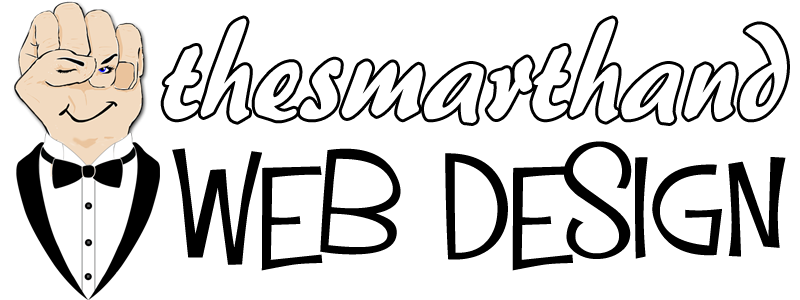Follow these 3 steps to help get you on your way to a brand new website.
#1 Find a Domain Name
Before you can get any web pages on the internet you’ll need a Domain Name and a Hosting Provider.
A Domain name is the name of your site including the www. and the .com/.co.uk/.net/.org etc., e.g www.thesmarthand.co.uk. Your Domain Name should be easy to remember and easy to type. The best domains have the following characteristics:
Once you have decided on an appropriate name the next stage is to check whether the name is available. This can be done in a number of ways but many people are tempted with free domain name registration when signing up with an Internet Service Provider (ISP) or Web Hosting company. These companies quite often include a ‘free’ Domain Name in their registration process. Beware however, that renewal costs for the domain name are typically higher after the initial sign up versus buying the domain name form a third party.
You can use the Domain Checker tool below to see if your chosen domain name is available.
Enter the domain name you want to check without the leading www e.g. yourname.com or yourname.co.uk
Once you have found an appropriate domain name that is available, you can either purchase it from a domain name registrar such as Domain.com, Namecheap.com or GoDaddy.com or if the host provider you have chosen offers a free domain name as part of the hosting package, get the domain name that way. Buying the domain name separately from your hosting provider can work out at a lower cost as the renewal costs for hosting+domain name packages are typically higher after the initial sign up.
It is also easier to move your website to another host if your future needs change and you have to upgrade your hosting package.
#2 Find a Hosting Provider
There are numerous hosting providers out there, some very good and some not so good so if you have no clue as where to start with choosing a hosting provider, it is recommended that you do your research or better still, talk to a professional first! In the majority of cases, how you want your website to function will determine what is the best hosting package for your needs.
Here at The Smart Hand Web Design, we’ve worked with a number of different hosting providers. If a client does not have a hosting provider, then we recommend Namecheap **- after all it is who our own websites are hosted with! We are very familiar with their setup, they have a knowledgeable team and have always provided good customer service and support.
Another benefit of using Namecheap **, is that you can pay for your hosting monthly on a ‘rolling contract’ basis so you don’t end up with a large bill to pay for every year.
Other web designers/developers will have their own hosting preferences so it is all based on the hosting provider your web designer/developer is most comfortable using.
If you are going to have a go at building your own website, make sure the hosting provider you go for, has the latest cPanel (an absolute must to manage the website files, PHP versions, Databases and other back-end website functions).
Check out our ‘Hosting Options’ page which goes into more details about the three main types of hosting services.
** By clicking these links and purchasing any of the services offered, we will receive a small affiliate commission.
TIP OF THE DAY – Set up your own Domain Name and Hosting Provider accounts.
In our experience, there have been a number of instances where clients have allowed others to register their domain name and hosting for them. Then after the website was designed and launched, they tried to contact the designer after a year or so, to make changes to the site or transfer the domain to someone else, another designer or themselves and unfortunately they were nowhere to be found. Uncontrollable circumstances can/may arise that unintentionally causes a designers unresponsiveness like a terminal illness, career change etc. In these cases, you’ll find yourself having to register a new domain name (after you spent so much time finding the perfect one!) and almost certainly having to recreate your website from scratch.
#3 Provide good content
The hardest thing for busy people to do is take the time to try and work out what web pages are required and then developing the content for each page.
Follow these tips to start developing your website content
Preparing good content for your website is usually the most difficult and time consuming process especially if you haven’t already thought deeply about your brand message. It takes a commitment from you to do it right. Graphic/Web Designers, Brand Strategists and Marketing consultants can offer you all the guidance in the world, but only you truly know your vision for your business or organisation.
